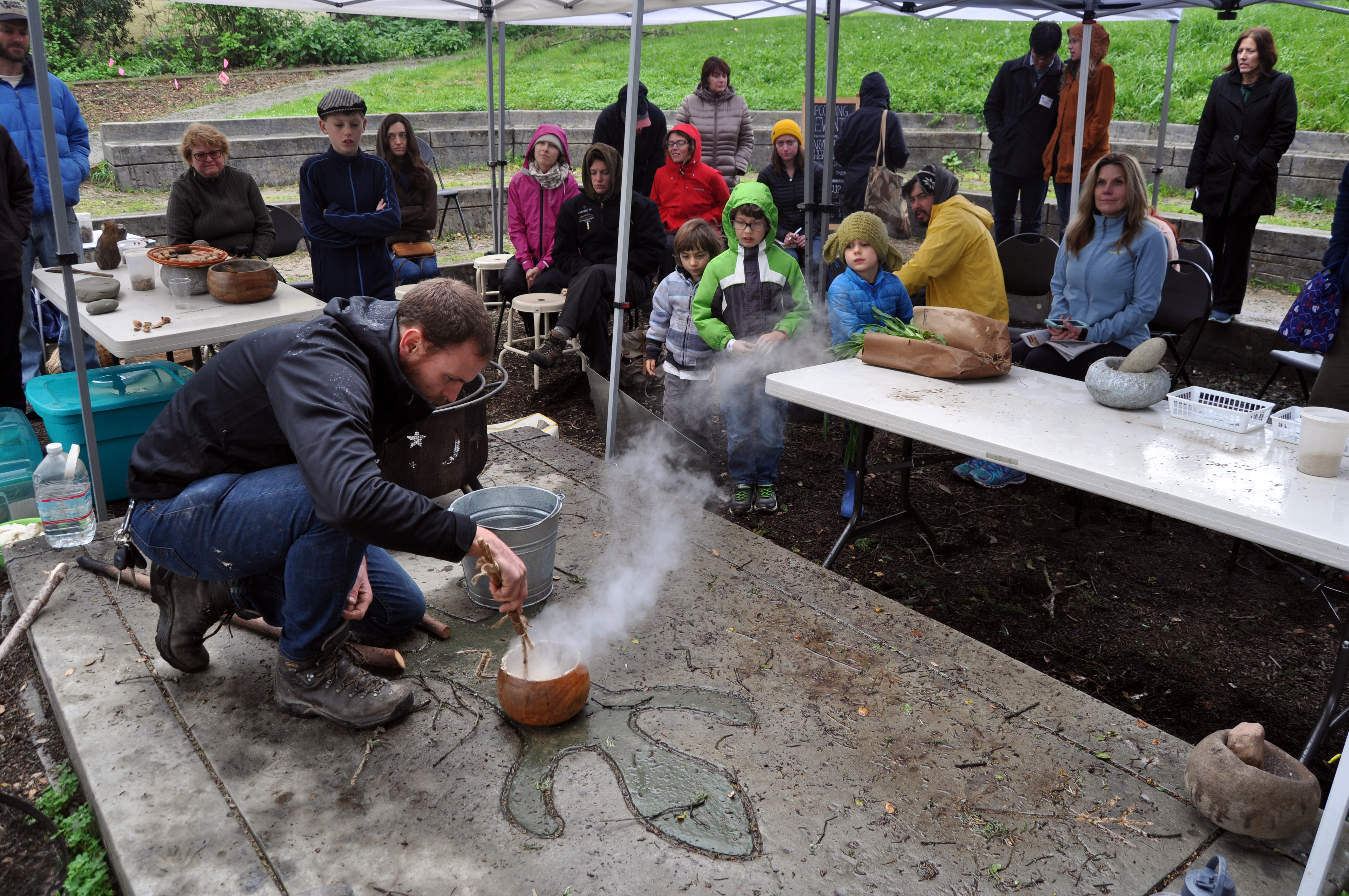We live in a foodie culture. Intellectual fascination with the ingredients, techniques and traditions surrounding food has exploded in this era of celebrity chefs, farm-to-table restaurants, and highly creative handcrafting of everything from jam to beer. Inspired by this enthusiasm and our regional bounty, the Museum has dedicated public programming in February and March to exploring the natural history of food.
Following February’s Naturalist Night talk on organic farming principles, State Park Ranger Alex Tabone joined Rick Flores, Curator of California Native Plant Collection at the UC Santa Cruz Arboretum and Associate of the Amah Mutsun Land Trust, for a special workshop on native foods and preparations. We were also so grateful to have Chairman Valentin Lopez from the Amah Mutsun Tribal Band honor us with his presence and cultural insights. The engaged audience watched demonstrations of the traditional, indigenous methods of preparing manzanita cider, roasted soaproot, roasted grass seeds, and acorn porridge.
March is equally bubbling over with food-related events. We have two Naturalist Nights this month dedicated to further exploring the natural history of food and how we connect to it:
 On March 21st, the Museum is partnering with Mutari Chocolate, to reveal what it takes to make a delicious cup of the ultimate comfort drink, hot chocolate. During the “Bean to Cup” presentation, Mutari’s owners, Katy Oursler and Stephen Beaumier, will educate us about the origins and history of chocolate making. Then they will lead us in a guided tasting of their delicious sipping chocolate!
On March 21st, the Museum is partnering with Mutari Chocolate, to reveal what it takes to make a delicious cup of the ultimate comfort drink, hot chocolate. During the “Bean to Cup” presentation, Mutari’s owners, Katy Oursler and Stephen Beaumier, will educate us about the origins and history of chocolate making. Then they will lead us in a guided tasting of their delicious sipping chocolate!
Then on March 30rd, the leaders of the Santa Cruz Heritage Food Project — Sierra Ryan, Liz Birnbaum, Jody Biergiel Colclough and Katie Hansen — will bring us up to speed on more than four years of research into the stories behind local foods such as beets, berries and wine grapes. And we’re very excited to welcome the Teen Kitchen Project for a special food demonstration before the talk.
Santa Cruz is synonymous with a menu of culinary delights — from pop-up restaurants to small-batch artisanal foods emphasizing local ingredients. We hope that this month you will join us in connecting to the natural history of some of our favorite foods and seeing them in a whole new way.
Thank you,
Heather
![]()

